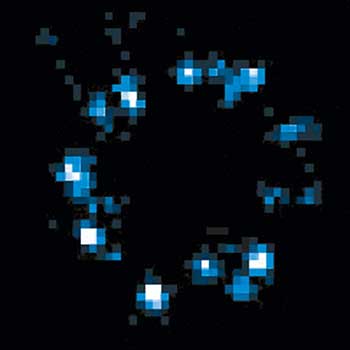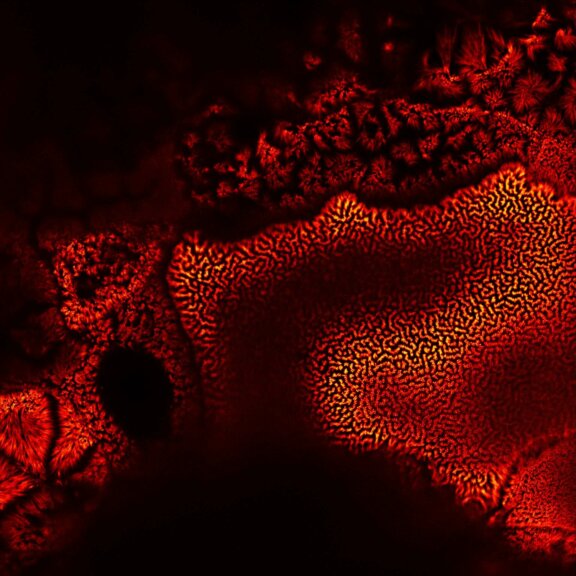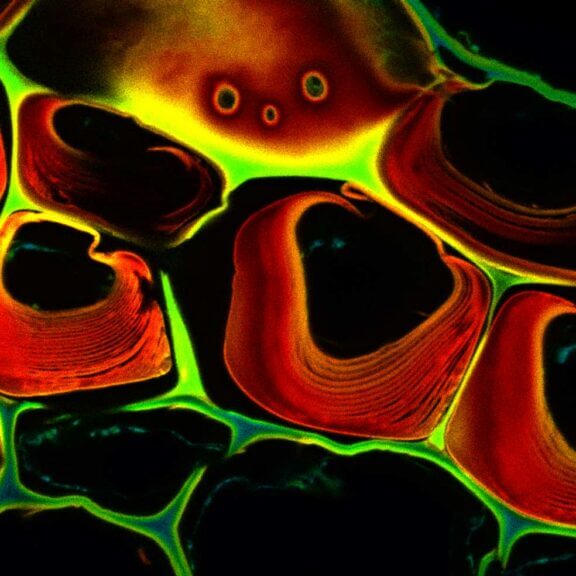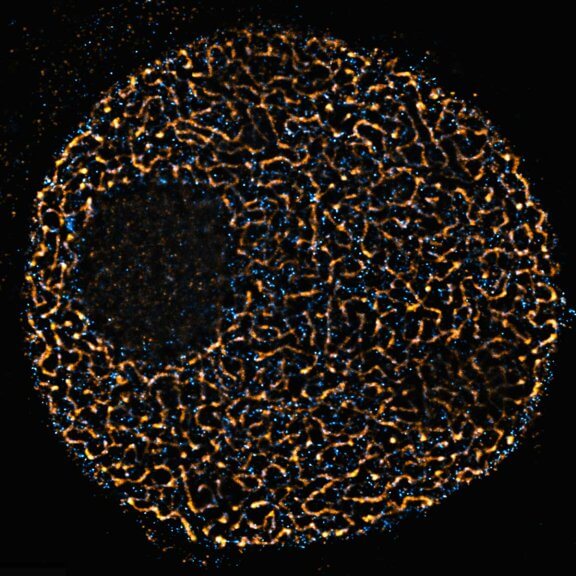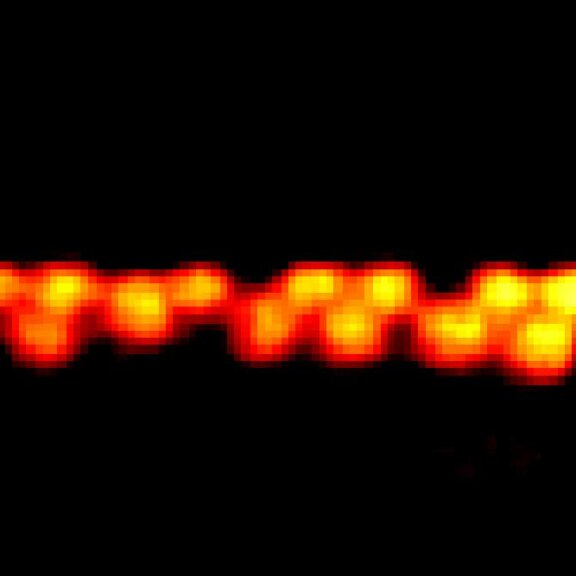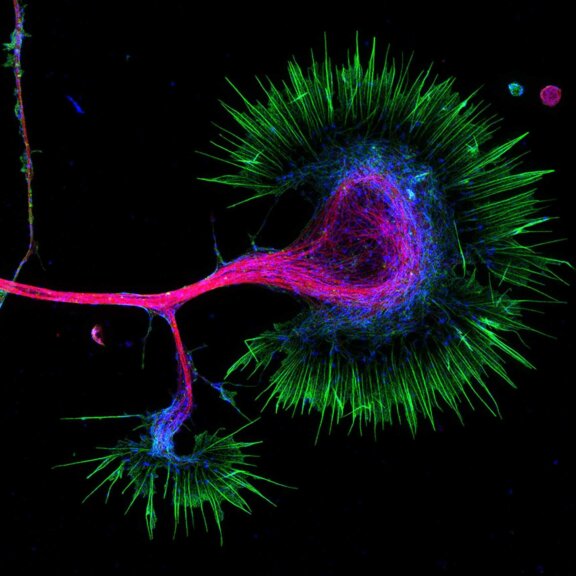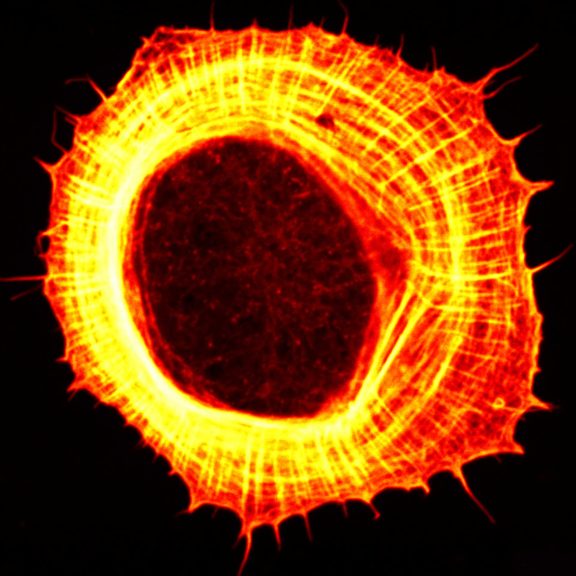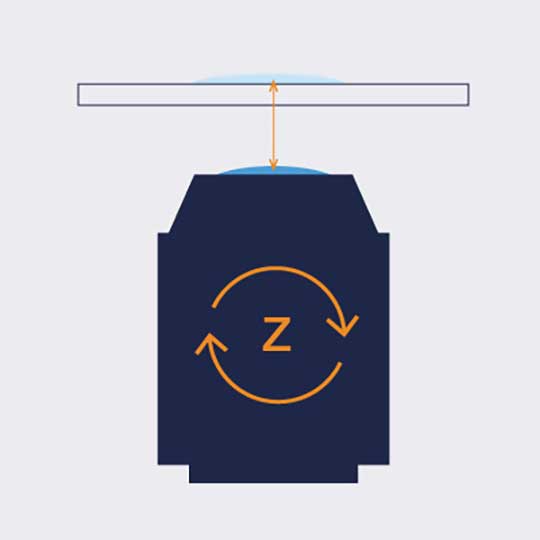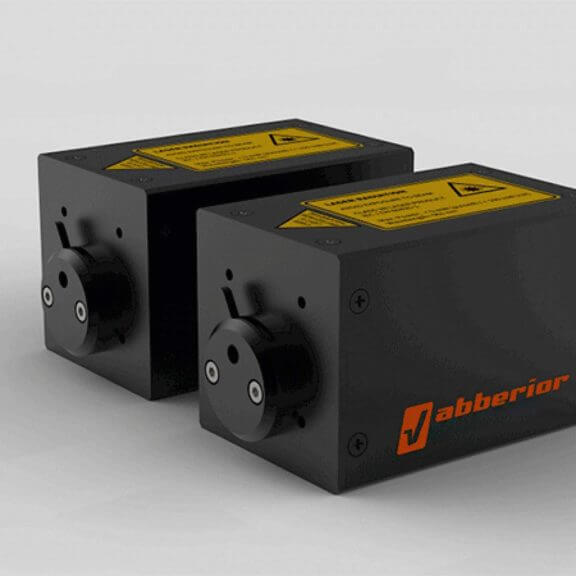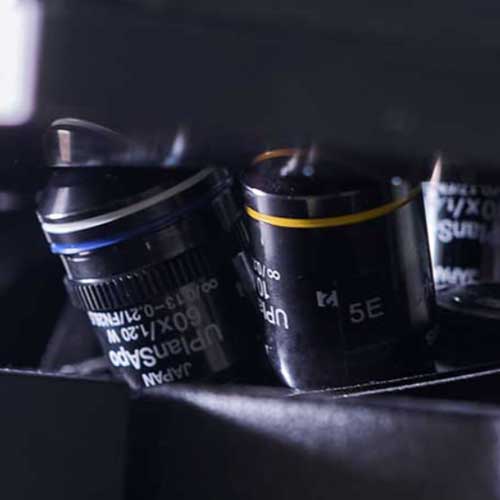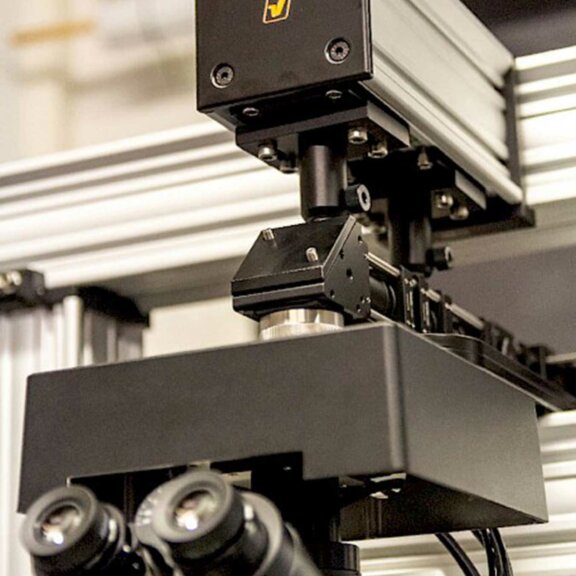Picosecond pulsed lasers
abberior’s pulsed lasers are the ideal light source for fluorescence excitation in biomedical applications. They are available in a wide variety of wavelengths so there is a match for every fluorescent marker in your arsenal. Their pulsed nature is the key to superior STED and lifetime microscopy and when not in use, individual laser lines and their respective dichroics, can be temporarily removed from the beam path for 100% gap-free fluorescence detection!
for perfect excitation
MINFLUX Module
Single-digit nanometer resolution with the MINFLUX module for our MIRAVA POLYSCOPE
MATRIX Detector
Many eyes see more than one. The MATRIX detector drastically improves signal-to-background ratio, resolution, and dynamic range.
TIMEBOW Imaging
TIMEBOW lifetime imaging for stunning results at confocal and STED super-resolution.
FLEXPOSURE Illumination
Brings down the light dose on your sample and lables dramatically. Key ingredient for volume and live-cell superresolution.
RAYSHAPE Mirror
Dynamic aberration correction with a deformable mirror over about 200 µm z-range. 140 digital actuators adjust the mirror surface within milliseconds.
Custom Solutions
We offer solutions for even the most challenging applications. Everything that can be done, we will do.
Excitation wavelength
from 375 to 1.320 nm
Our excitation lasers are available for a wide variety of wavelengths over the full spectrum from ultra-violet to near infrared. A typical microscope is equipped with excitation lasers at 405 nm, 488 nm, 518 nm, 561 nm, and 640 nm. This allows the user to work with virtually every dye in confocal and STED mode.
Other wavelengths or custom laser lines are available on request.

Every laser line is coupled separately into the beam path via a removable ultra-narrowband dichroic mirror. These filters are only a few nanometers wide and have near-100 % transmission over the rest of the full spectrum. Any combination of STED and excitation laser lines can be selected for a measurement.
Compared to other, e.g. acousto-optical solutions, our filters have better transmission of fluorescence and better blocking of unwanted (stray) light. They are more flexible, too: they are available throughout the full spectrum from UV to NIR and can thus be employed also for the STED lines, while acousto-optic filters cannot. And what’s best, when the laser line is not used in an experiment, the corresponding filter is automatically removed from the beam path. You can’t get better transmission than that!

- Image with any combination of lasers
- Gap-free detection through complete removal of filters for unused lasers
- Perfectly suited for lifetime imaging







